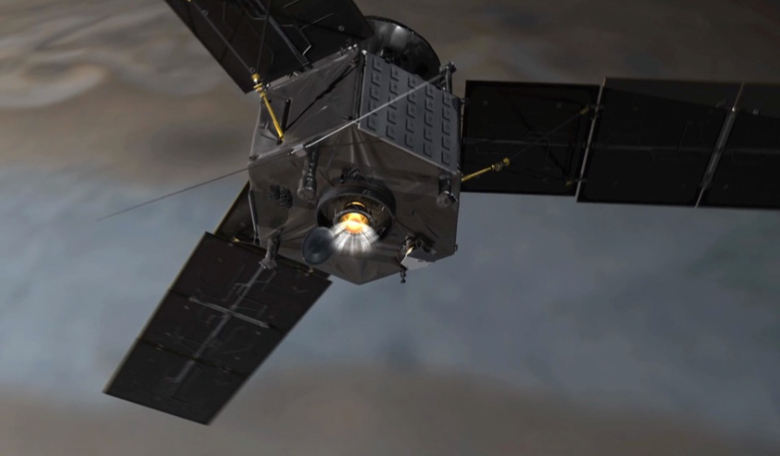Launched nearly five years ago, NASA's Juno mission is on its final leg of its momentous journey and tonight, at roughly 12 a.m. EDT, July 5, the spacecraft will complete a burn of its main engine, placing it in orbit around the most massive planet in our solar system, Jupiter.
The burn (insertion manoeuvre) occurs at the spacecraft’s closest approach to Jupiter, and it will slow JUNO enough to be captured by the giant planet’s gravity. This is part of the first steps involved in JUNO’s orbit-insertion phase and the stakes are exceedingly high. If the Jupiter Orbit Insertion burn fails to insert the spacecraft into orbit around the gas giant, there will be no science mission.
If all goes according to plan, and many scientists associated with the project will not sleep until they know the plan is underway, then JUNO’s orbit-insertion (JOI) phase will start with a slow, first turn of 15 degrees away from the sun, toward the JOI attitude. 72 minutes later, it will make a faster turn into the orbit-insertion attitude.
At 10:41 p.m. EDT (7:41 p.m. PDT), Juno switches to its toroidal low-gain antenna before beginning "nutation damping" activity to remove remaining wobble. Fine-tune adjustment of the JOI attitude is next and twenty-two minutes before the main engine burn, at 7:56 p.m. PDT (10:56 p.m. EDT), the spacecraft spins up from 2 to 5 revolutions per minute (RPM) for approximately five minutes, to help stabilise it for the orbit insertion burn.
At 11:18 p.m. EDT (8:18 p.m. PDT), Juno's 35-minute main-engine burn will begin, but it will still be another nail-biting hour – filled with more critical manoeuvres – before the spacecraft begins transmitting telemetry.
The burn is performed in view of Earth, allowing its progress to be monitored by the mission teams at NASA JPL and Lockheed Martin Space Systems via signal reception by Deep Space Network antennas in Goldstone, California, and Canberra, Australia.
All of JUNO’s instruments will be turned off during this crucial phase and so no science observations are planned during the JOI burn. Once up and running however, the spacecraft will repeatedly dive between the planet and its intense belts of charged particle radiation, coming only about 5,000 kilometres (3,000 miles) from the cloud tops at its closest approach and in doing so, JUNO will hopefully shed light on how Jupiter formed and evolved. All that is left to say is ‘Watch This Space’ and never has a pun felt more appropriate than this one!











